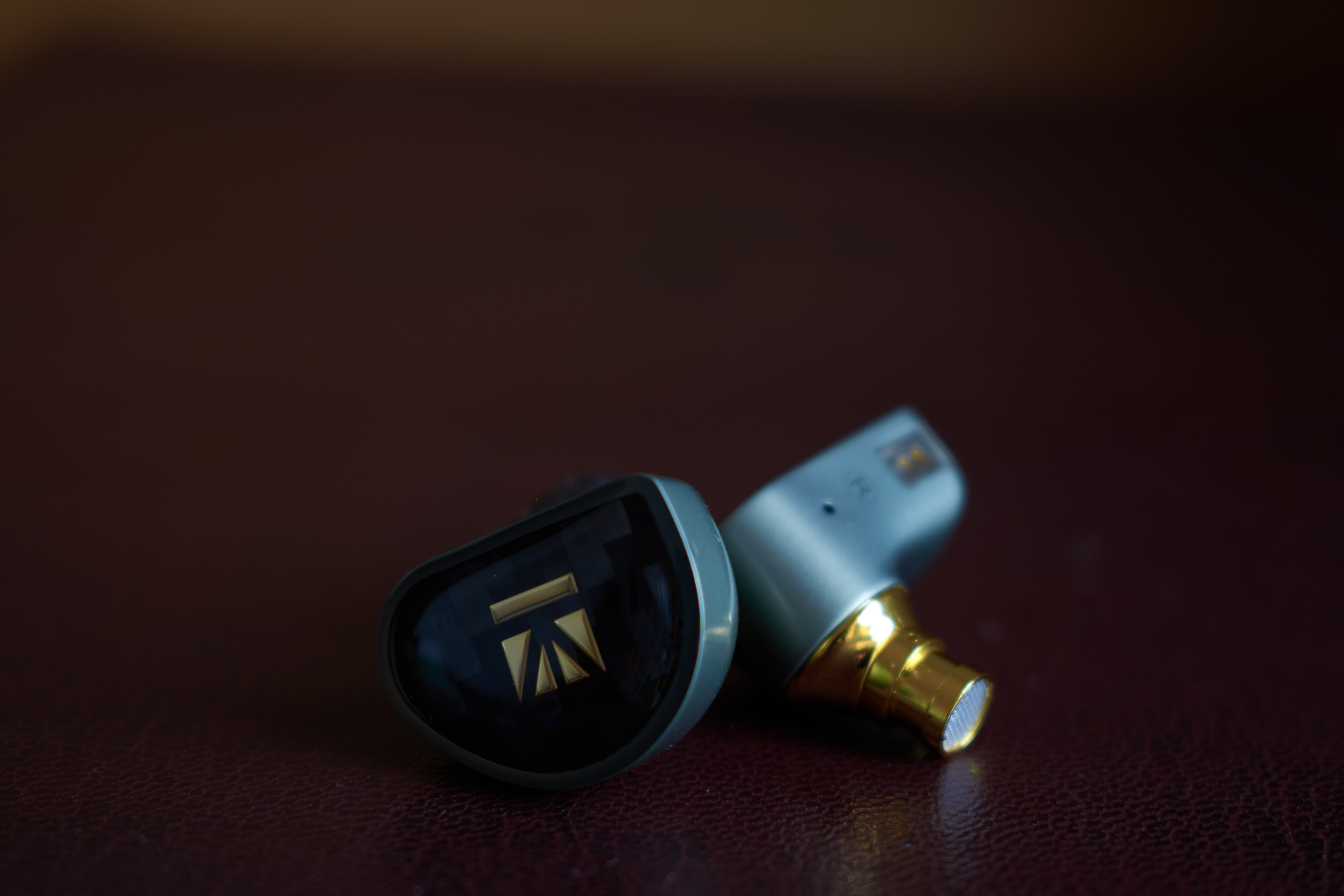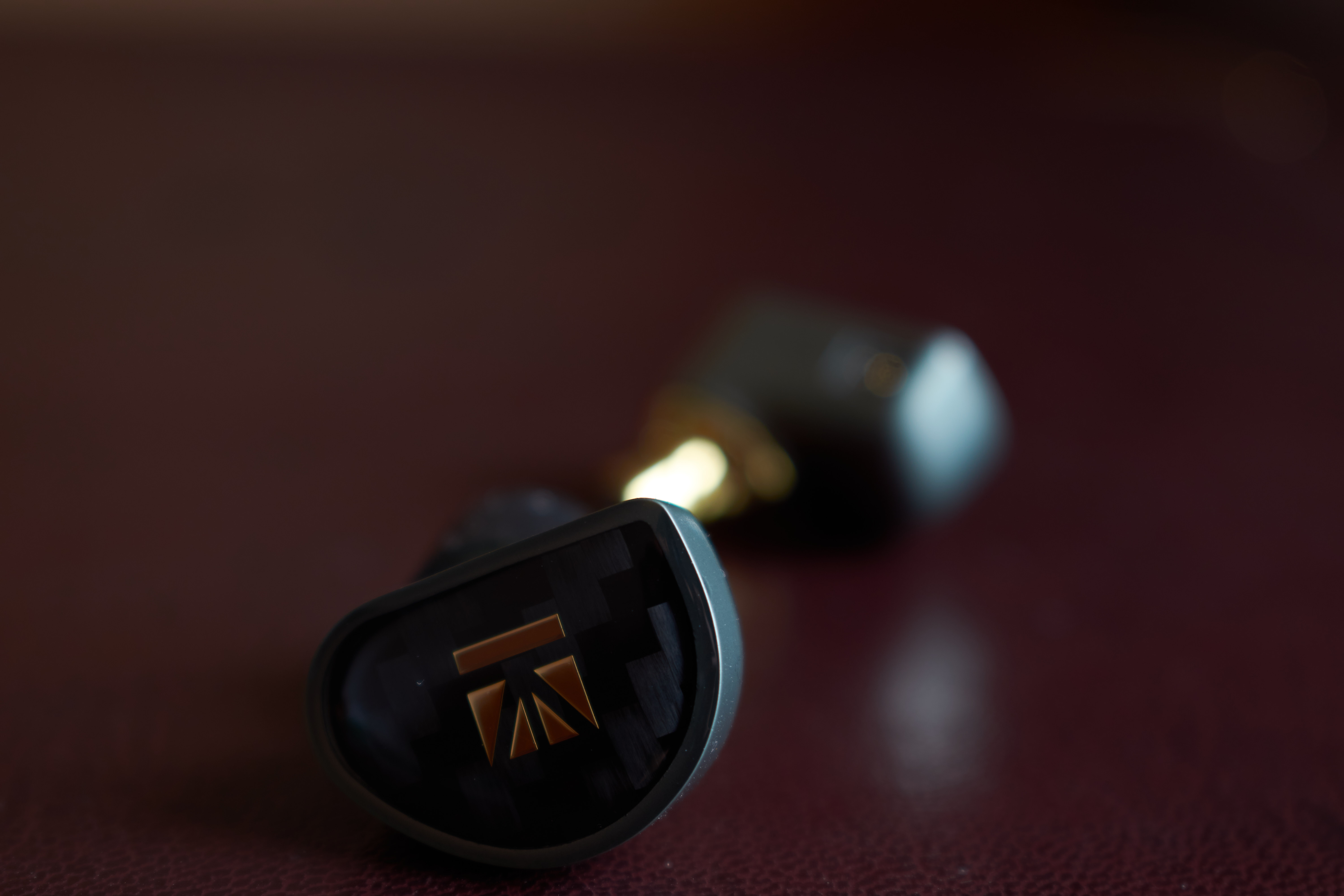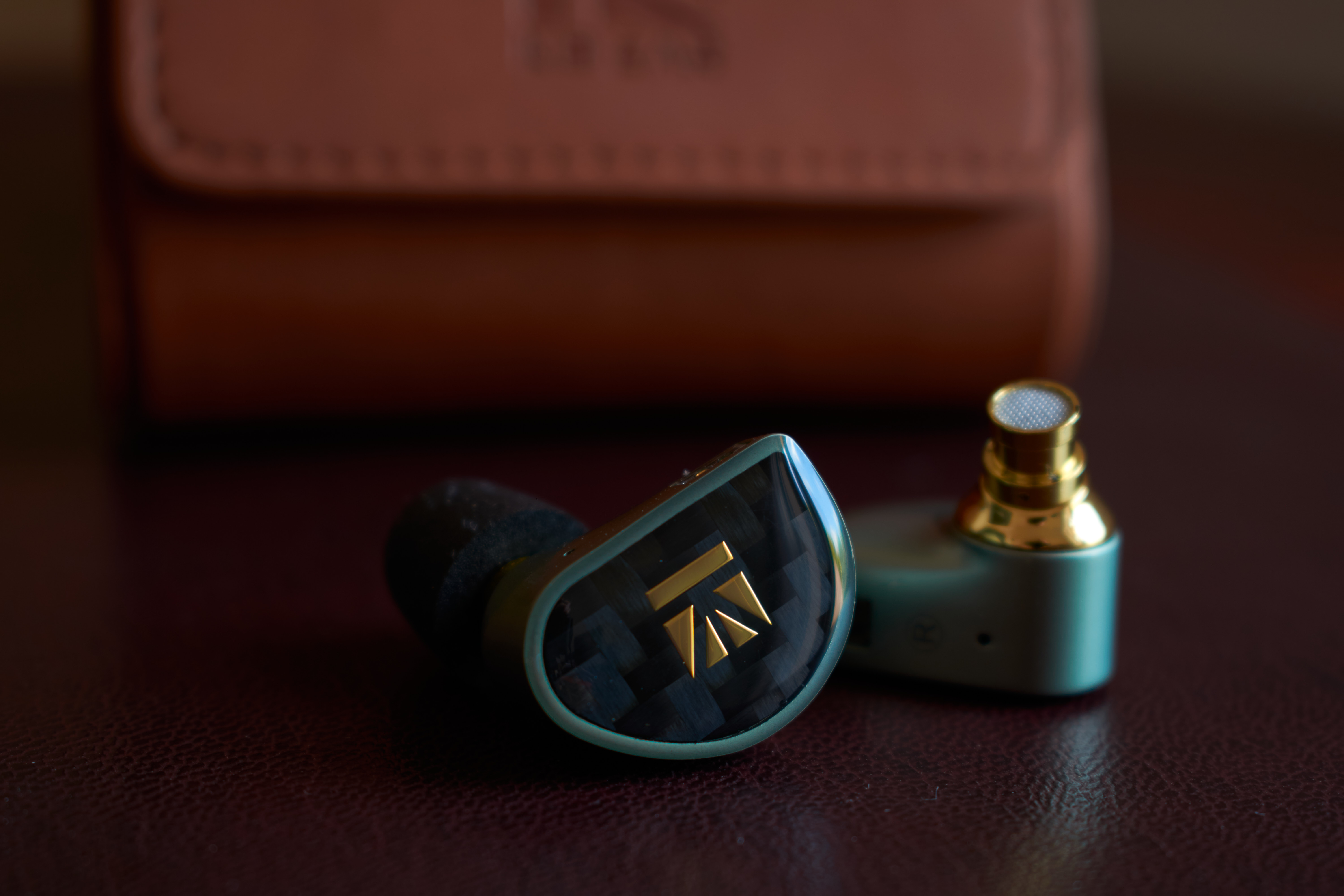
The KB EAR Diamond is an in-ear monitor with one diamond-like carbon coated PET diaphragm dynamic driver per housing. The Diamond is currently available for $79. I received the Diamond directly from KB EAR in exchange for a fair and objective review.
This review can also be viewed on my blog: KB EAR Diamond Review
SOURCES:
I have used the KB EAR Diamond with the following sources:
- JDS Labs The Element
- Apple USB-C to 3.5mm dongle
PACKAGING AND ACCESSORIES:



The KB EAR Diamond comes in a rectangular black box. The KB EAR logo is printed in gold on the top box cover, and a sticker on the the bottom of the box lists KB EAR’s contact information and technical specifications for the Diamond. The box contains the Diamond earpieces, a brown leather carry case with velvet lining and a magnetic latch, a braided silver-plated copper (SPC) detachable cable with 2-pin connectors, three pairs of short wide-bore grey silicone eartips (S, M, L), 3 pairs of short wide-bore black silicone eartips (S, M, L), 1 pair of black foam eartips, 1 pair of grey foam eartips, and a user guide. The black silicone eartips have a grippy, rubbery texture that is reminiscent of Sony hybrid eartips.
BUILD QUALITY / DESIGN:

The KB EAR Diamond has CNC-machined metal housings with what appears to be glass faceplates. The faceplates have a carbon-fiber pattern set behind the glass, which is inlaid with the KB EAR logo in gold-colored metal. I did notice a few minor bumps and imperfections on the housing surface. The nozzles are brass with a silver-colored metal mesh cover. The color of the brass varies slightly between the bottom and top sections of the nozzle. “L/R” is printed in light black text on the fronts of the housings below the 2-pin connector. The shells are moderately sized. The only hard edge on the housing is along the edge of the faceplate. There is one circular vent on the front side of each housing, below the “L/R” indicator. There is another small circular vent on the bottom ridge of each nozzle. The nozzles have a lip for securing eartips. I did not have any issues with tips coming loose in my ears while using the Diamond. There is no driver flex.

The Diamond comes with an elegant-looking eight-core SPC cable. The cable uses a straight 3.5mm jack housing with “KB EAR” printed in white on the side. The flush 2-pin connectors are marked with blue dots to indicate polarity. The left 2-pin connector plug is clear plastic and the right 2-pin connector plug is red plastic, but the housings are not otherwise marked to indicate channel. The black 3.5mm jack housing, 2-pin connector housings Y-split hardware, and chin-adjustment choker appear to be metal. The cable has pre-formed clear plastic ear-guides without memory wire. The cable is not tangle-prone or microphonic. There is rubber strain-relief above the 3.5mm jack.
COMFORT / FIT / ISOLATION:

The KB EAR Diamond is intended to be worn cable-up only. I found them to be very comfortable to wear over extended periods. The nozzles have a moderate insertion depth. I did find that the Diamond had a tendency to migrate out of my ears with the grey medium silicone eartips, but switching to the large black silicone eartips mitigated this issue. Isolation was very good for a vented dynamic driver design.
SOUND:

The KB EAR Diamond has a U-shaped sound signature that can be described as an exaggerated Harman Target-type sound.
The Diamond has excellent sub-bass extension. The sub-bass is more prominent than the mid-bass. There is no mid-bass hump and no mid-bass bleed into the lower midrange. There is a good amount of impact, slam, and rumble. The bass has astonishing speed, articulation, resolution, and texture for a sub-$100 IEM.
The midrange has a cool tonality. The lower mids are recessed compared to the upper mids such that vocals are generally emphasized over instrumentation. Instruments in the lower midrange have adequate body but clarity is emphasized over warmth. Vocal intelligibility is excellent. Female vocals are slighly more forward than male vocals. Harsh male vocals are conveyed with satisfying grit but are a bit dry. Female vocals are vibrant but slightly sibilant. There is a little too much presence. In particular, distorted electric guitars sound slightly too screamy.
The treble is sparkling and airy with great resolution. The lower treble is detailed without being harsh. The upper treble extension is excellent but requires some initial adjustment to get used to if coming from headphones with a more rolled-off top end. Treble transients are speedy and crisp.
Soundstage is larger than average for a single dynamic driver configuration. Imaging and instrument separation are excellent. Timbre is mostly realistic if cool and slightly dry.
MEASUREMENTS:

My measurements were conducted with a Dayton iMM-6 microphone using a vinyl tubing coupler and a calibrated USB sound interface. The headphones are driven using my Element, which has an output impedance of no more than 1 ohm. The measurements use a compensation file derived from relating my raw measurements to published measurements from Crinacle and Antdroid. The measurements are presented with 1/24th smoothing. The magnitude of the valley around 7k is a coupler artifact. There is a resonant peak around 8k. Measurements above 10k are not reliable.
EQ:
The only tweaks I would make to the KB EAR Diamond would be to dial down the upper midrange past 4k, specifically to make distorted electric guitars sound more natural. This can be accomplished with the following EQ filters:

EQ’d FR Average (Green) vs OOTB FR Average (Brown)

AMPLIFICATION REQUIREMENTS AND SOURCE PAIRING:
The KB EAR Diamond can be driven to comfortable listening volumes with a competent dongle. I did not notice hiss with either of my sources.
COMPARISONS:
The KB EAR Diamond is significantly better in all respects than any other IEM I have heard in the sub-$100 space, to include the Dunu DM-480 and the Shozy Form 1.1. I will update this section at a later date with a comparison to the Moondrop Starfield, which I have not yet received.
CLOSING WORDS:

If you like the Harman Target, get this IEM. It has the best technical performance of any sub-$100 IEM I have ever heard. However, if you find Harman-targeted tunings to have shouty/thin midranges, this IEM is not for you.








































































































